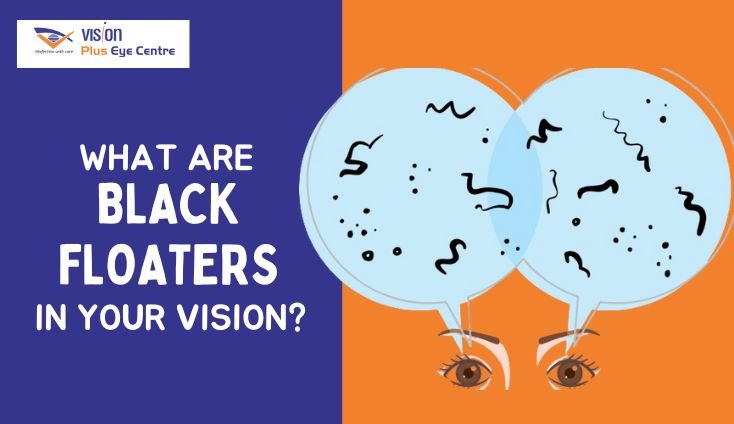
Have you ever noticed tiny black specks or cobweb-like strands drifting across your field of vision, especially against a bright background? These visual disturbances, commonly known as black floaters, are a widespread phenomenon experienced by many. While often harmless, understanding their nature and knowing when they might signal something more serious is crucial for maintaining optimal eye health.
Understanding Black Floaters: What Are They?
Black floaters are essentially small pieces of debris within the vitreous, the gel-like substance that fills about 80% of the eye and helps it maintain a round shape. Over time, the vitreous slowly shrinks and liquefies, and during this process, tiny fibers within the vitreous can clump together. These clumps cast shadows on the retina – the light-sensitive tissue at the back of the eye – and these shadows are what we perceive as floaters.
Are Floaters a Normal Part of Aging?
For the most part, yes. Most people start to notice floaters in their 50s or 60s, and they’re particularly common in individuals who are nearsighted or have undergone cataract operations. However, the appearance of floaters can happen at any age, depending on the individual’s ocular health and the natural aging process of the eye.
Can Everyone Get Floaters?
Absolutely. While more common in older adults, floaters do not discriminate by age and can appear in younger individuals, especially those with high myopia (nearsightedness), or following eye injuries.
When Should You Be Concerned?
In many cases, floaters are more of an annoyance than a sign of something serious. They often settle over time and become less bothersome. However, there are circumstances when floaters could be indicative of a more significant issue. If you notice a sudden increase in floaters, especially if accompanied by flashes of light or a loss of peripheral vision, this could signal a retinal detachment or tear, requiring immediate medical attention. A sudden onset of floaters can also be a symptom of posterior vitreous detachment (PVD), where the vitreous gel pulls away from the retina. While PVD is not always serious, it should prompt a visit to the eye doctor to rule out retinal tears or detachment.
Are Floaters Ever a Sign of Eye Disease?
Yes, in some cases. Aside from retinal detachment or tear, floaters can occasionally indicate other eye conditions. Inflammation within the eye, such as uveitis, bleeding in the eye from various causes like diabetic retinopathy, or eye tumors, can also present with floaters. Therefore, a comprehensive eye exam is recommended if there’s a sudden change in the number or type of floaters.
Managing and Treating Floaters
For most individuals, no treatment is necessary for floaters. Adjusting to their presence is often the first line of ‘treatment’. However, if floaters significantly impair vision, a surgical procedure known as a vitrectomy may be recommended. During a vitrectomy, the vitreous gel, along with its floating debris, is removed and replaced with a saline solution. While effective, this procedure is reserved for severe cases due to potential complications, such as retinal tears or cataracts.
Another treatment option is laser vitreolysis, where a laser is used to break up the floaters, making them less noticeable. However, this treatment isn’t widely used or recommended for everyone, as it carries its own risks and is only suitable for certain types of floaters.
Preventing Floaters
While you can’t prevent floaters caused by aging, maintaining good eye health can help. This includes regular eye examinations, especially if you have conditions that can affect the eyes, such as diabetes. Protecting your eyes from injury by wearing protective eyewear during sports or hazardous activities is also important. Additionally, a healthy diet rich in vitamins and antioxidants can support overall eye health.
Living with Floaters
For most, adapting to floaters is the key. This usually involves mentally adjusting to their presence and learning to ignore them. Over time, your brain can adapt to the floaters, making them less noticeable.
The Bottom Line
Black floaters, though often harmless, can sometimes be a sign of more serious eye conditions. It’s essential to monitor changes in their appearance and seek prompt medical attention if you experience a sudden increase in floaters, flashes of light, or changes in your peripheral vision. Regular eye exams are crucial, especially as you age, to ensure any changes in your eye health are monitored. Remember, your eyes are irreplaceable, and taking care of them is vital for preserving your vision and overall quality of life.
Summary: Black floaters in your vision are usually harmless, caused by age-related changes in the vitreous humor of the eye. However, a sudden increase in floaters could indicate serious eye conditions, necessitating prompt medical attention. For comprehensive eye care and expert advice on floaters, visit Vision Plus Eye Centre, where maintaining optimal eye health is our priority.
Call Now at 0120-2481481, 2480480 +91 88003 13134 or email us at info@visionplus.net.in.
Book an Online Appointment: https://visionplus.net.in/contact/
About Author Bio: Dr. Ritu Aurora, M.S., is a highly skilled specialist in Cataract & Lasik Surgery, Glaucoma, and Pediatric Ophthalmology. With expertise in these areas, she is dedicated to providing comprehensive eye care and ensuring the well-being of her patients. Dr. Aurora brings a wealth of knowledge and experience to her practice.Top of Form

